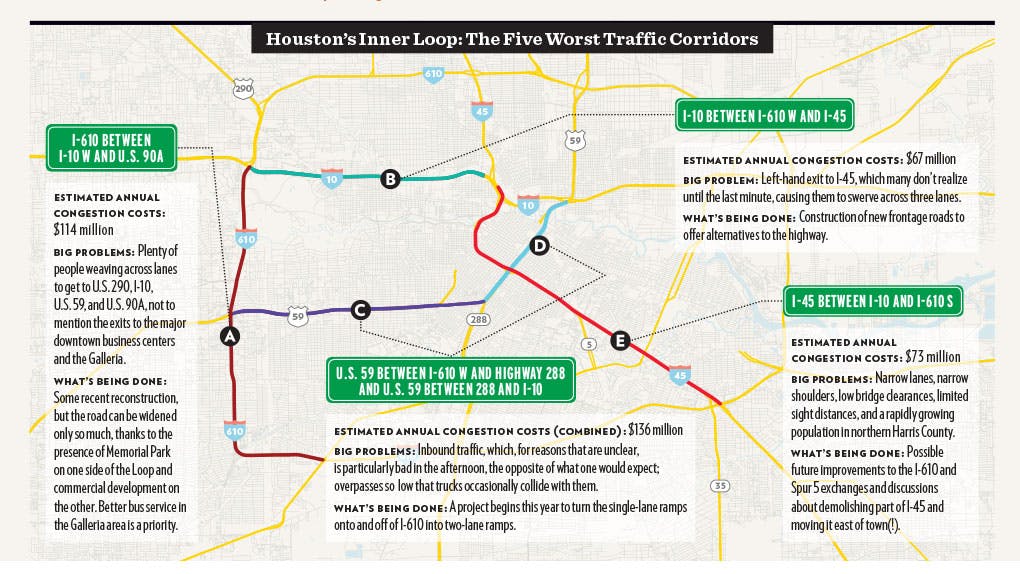
When the INRIX company released its annual list of America’s most congested cities, the big news for Texans was that for the second year in a row, Austin was ranked the fourth-most-congested city in America—up from sixth two years ago and ninth the year before that. But though Austin is certainly home to migraine-inducing traffic jams, its ranking obscures the fact that in Texas, Houston (number seventeen on INRIX’s list) is, in many ways, the king of congestion. On the Texas Department of Transportation’s list of our state’s 100 worst corridors, Houston has 36 entries; Austin has a mere 8. Yes, that’s largely a function of Houston’s size—there are simply more highways in Houston that can be congested. But sprawl also means that Houstonians are driving farther distances than Austinites are, which means Houston’s traffic problems are causing more problems than Austin’s. That’s true even if Texas’s most-congested stretch of road—Interstate 35 between Texas Highway 71 and U.S. 183—lies two and a half hours west of Houston. Depending on traffic conditions in Brenham, of course.
I-610 between I-10 W and U.S. 90A
Big problems: Plenty of people weaving across lanes to get to U.S. 290, I-10, U.S. 59, and U.S. 90A, not to mention the exits to the major downtown business centers and the Galleria.
What’s being done: Some recent reconstruction, but the road can be widened only so much, thanks to the presence of Memorial Park on one side of the Loop and commercial development on the other. Better bus service in the Galleria area is a priority.
U.S. 59 between I-610 W and Highway 288 and U.S. 59 between 288 And I-10
Estimated annual congestion costs (combined): $136 million
Big problems: Inbound traffic, which, for reasons that are unclear,
is particularly bad in the afternoon, the opposite of what one would expect; overpasses so low that trucks occasionally collide with them.
What’s being done: A project begins this year to turn the single-lane ramps onto and off of I-610 into two-lane ramps.
I-10 between I-610 W and I-45
Estimated annual congestion costs: $67 million
Big problem: Left-hand exit to I-45, which many don’t realize until the last minute, causing them to swerve across three lanes.
What’s being done: Construction of new frontage roads to
offer alternatives to the highway.
I-45 Between I-10 and I-610 S
Estimated annual congestion costs: $73 million
Big problems: Narrow lanes, narrow shoulders, low bridge clearances, limited sight distances, and a rapidly growing population in northern Harris County.
What’s being done: Possible future improvements to the I-610 and Spur 5 exchanges and discussions about demolishing part of I-45 and moving it east of town(!)








